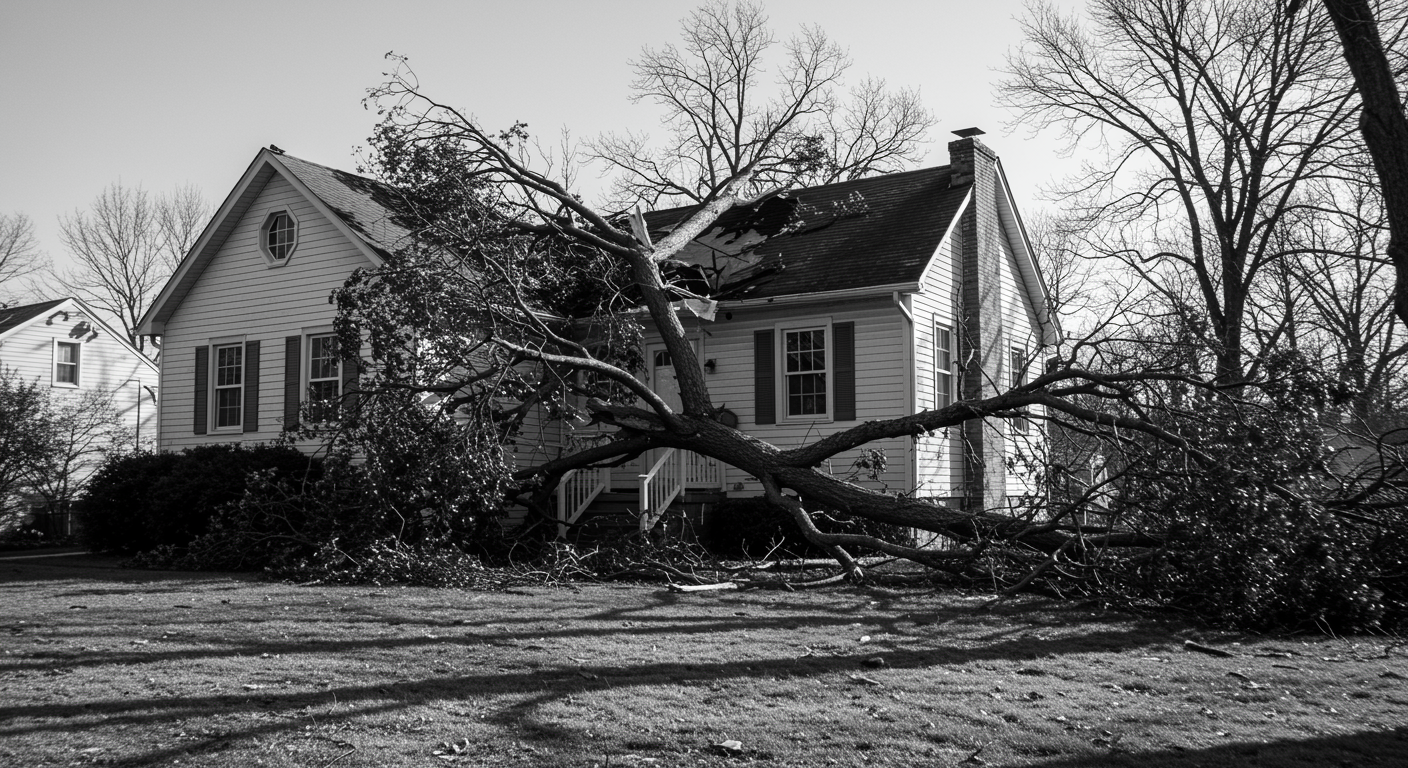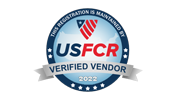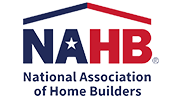How Can Strong Winds Cause Tree Damage to Homes in Forked River?
Even healthy trees can topple or break apart under the right conditions. Strong winds, especially during coastal storms or nor’easters, put enormous stress on trees — particularly older, weaker, or diseased trees.
Factors That Increase Tree Damage Risk During High Winds
- Saturated soil from heavy rain, weakening root systems
- Trees growing too close to homes, fences, or power lines
- Dead limbs or diseased branches that easily snap
- Shallow-rooted species more prone to uprooting
- Past pruning or storm damage leaving weak points
Once a tree falls onto your home, fence, or vehicle, fast action prevents further destruction. However, knowing how to handle the situation safely and efficiently matters just as much.
What Immediate Steps Should You Take After Tree Damage in Forked River?
When a tree crashes onto your roof or property, your first instinct might be to start clearing the mess. However, some immediate steps help keep you safe and ensure your insurance claim moves forward smoothly.
Essential Actions to Take Right After Tree Damage
- Stay out of unsafe areas. Avoid entering rooms directly under fallen trees or damaged roofs.
- Shut off utilities if needed. If branches damage power lines or gas lines, turn off the utilities and call emergency services.
- Document all visible damage. Take photos and videos from multiple angles before moving anything.
- Contact your insurance company. Start the claims process right away to avoid delays.
- Call a professional restoration company. Expert help ensures safe tree removal, thorough damage assessment, and proper repairs.
Although it might seem tempting to handle this yourself, professional equipment and experience make tree removal and structural repairs safer and faster.
How Do Professionals Handle Tree Damage Restoration After Strong Winds?
Once you contact Advanced Disaster Recovery Inc., our team moves quickly to secure your property, remove the tree, and assess the full extent of the damage. Unlike basic tree removal services, we also evaluate your home’s structure, roof integrity, and water intrusion risks.
Step-by-Step Tree Damage Restoration Process
-
Emergency Response and Property Securing
First, we stabilize the situation by securing openings in your roof, windows, or walls. This prevents additional weather damage or unauthorized entry. -
Safe Tree and Debris Removal
Next, we use specialized equipment to carefully remove fallen trees and large branches without causing further structural damage. -
Comprehensive Damage Assessment
We inspect your roof, siding, gutters, and nearby structures to identify all related damage — including areas you may not see from the ground. -
Water Removal and Structural Drying
If the tree caused water intrusion, we remove standing water and use professional drying equipment to prevent mold growth and further deterioration. -
Roof and Structural Repairs
Finally, our team handles all necessary repairs, including roof replacement, siding repairs, window replacement, and interior reconstruction.
By managing both tree removal and home restoration, we save you time, reduce stress, and ensure nothing gets overlooked.
What Are the Hidden Risks After Tree Damage?
Some tree damage seems minor at first glance — maybe just a few broken shingles or small punctures in the siding. However, ignoring these issues can lead to bigger problems later.
Hidden Risks You Shouldn’t Ignore
- Roof leaks that develop slowly, causing hidden water damage
- Compromised structural integrity where branches press into framing or roof trusses
- Siding cracks that allow moisture to enter walls, leading to mold growth
- Gutter damage that causes improper drainage and foundation issues
Even if the damage seems minor, a professional inspection ensures your home stays safe and sound long after the tree is gone.
How Long Does Tree Damage Restoration Usually Take?
The timeline for tree damage restoration varies depending on the severity of the damage and how quickly professional help arrives. Acting fast shortens the process and helps you avoid secondary damage.
- Minor tree damage, such as small branches hitting the roof, can be cleaned up and repaired within a few days.
- Moderate damage, involving partial roof punctures or minor structural impacts, may take one to two weeks.
- Severe damage, with large trees crushing the roof or causing interior flooding, could require several weeks to a month for full repairs.
Advanced Disaster Recovery Inc. works quickly to restore your home while ensuring every repair meets safety and quality standards.
Can You Prevent Tree Damage Before the Next Storm?
Although you can’t control the weather, you can reduce the risk of tree damage with proactive tree care and home maintenance.
Tips to Protect Your Home from Tree Damage
- Schedule annual tree inspections to spot weak or diseased limbs
- Trim branches hanging over your roof or near power lines
- Remove dead or dying trees before they become hazards
- Keep gutters and downspouts clear to manage storm runoff
- Install roof straps or reinforcements to improve wind resistance
Even with preventative measures, strong winds can still cause tree damage. If that happens, Advanced Disaster Recovery Inc. stands ready to respond 24/7.
Need Emergency Tree Damage Restoration in Forked River, Ocean County? Call Advanced Disaster Recovery Inc. Today
Tree damage can turn your home into a hazardous mess. But you don’t have to handle it alone. Advanced Disaster Recovery Inc. provides fast, professional tree removal, property securing, and complete restoration services across Forked River and Ocean County.
- 24/7 emergency service
- Safe tree and debris removal
- Full-service roof, siding, and structural repairs
- Direct insurance coordination for hassle-free claims
Let us handle the heavy lifting so you can focus on what matters most — getting back to normal. Contact us today for expert tree damage restoration.









